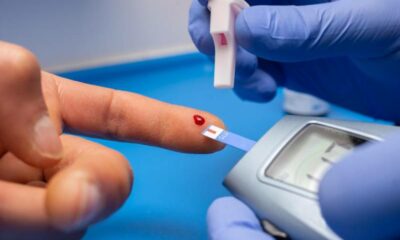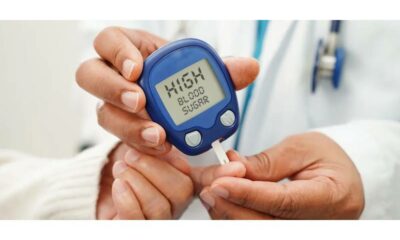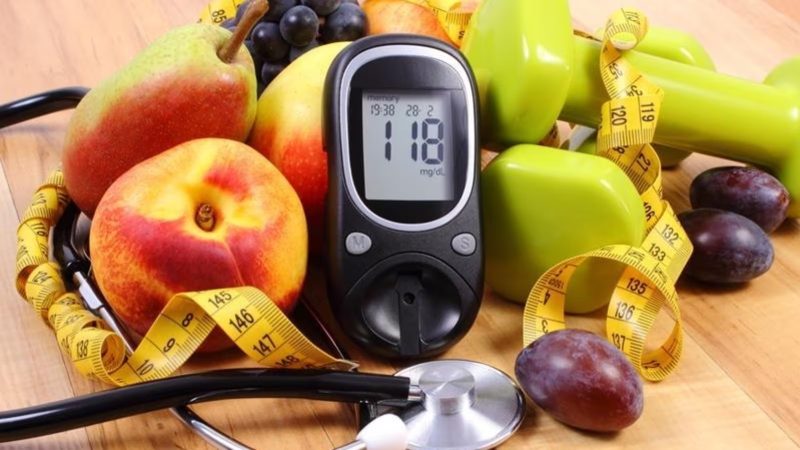Imagine living in a vibrant city. Blood sugar is the traffic flow within this city. Food acts as incoming vehicles, and insulin is the traffic controller. Ideally, a smooth flow ensures all “cells” (buildings) receive the “fuel” (glucose) they need. However, in diabetes, this traffic gets disrupted. This guide equips you with the knowledge and tools to become a master traffic manager for your internal city, effectively controlling your blood sugar and living a fulfilling life.
This article goes beyond generic advice. We’ll delve into:
- The “Science of Traffic”: Understanding blood sugar regulation and the impact of diabetes.
- Know Your City Streets: Exploring different types of diabetes and their management strategies.
- Smart Navigation (Diet): Crafting balanced meals with glycemic index and carbohydrate counting to regulate traffic flow.
- The Power of Movement (Exercise): Unveiling the magic of physical activity for smooth traffic flow.
- Beyond the Main Roads (Lifestyle): Exploring sleep, stress, and gut health for a holistic approach.
- Building Your Support Network: The importance of a diabetes care team, support groups, and technology.
- Unique Challenges and Solutions: Tackling travel, special occasions, and emotional aspects of diabetes.
- A Glimpse into the Future: Emerging technologies offering hope for a brighter tomorrow.
The “Science of Traffic” – Demystifying Blood Sugar
Think of your blood as a highway transporting glucose, the fuel your body’s cells need for energy. Insulin, produced by the pancreas, acts as the traffic controller, allowing glucose to enter the cells. In a healthy individual, this system maintains a smooth flow of traffic (blood sugar levels).
However, in diabetes, this system malfunctions:
- Type 1 Diabetes: The pancreas struggles to produce enough insulin, causing a traffic jam of glucose in the bloodstream (high blood sugar).
- Type 2 Diabetes: The body either doesn’t produce enough insulin or becomes resistant to it, leading to a similar traffic congestion.
- Gestational Diabetes: A temporary disruption during pregnancy, requiring close monitoring.
Chronically high blood sugar levels can damage roads (blood vessels) and buildings (organs), leading to serious health complications.
Types of Diabetes
Understanding the specific type of diabetes you have is crucial for effective traffic management. Here’s a breakdown of the three main types:
- Type 1 Diabetes: This autoimmune disease disrupts insulin production, requiring lifelong insulin therapy. It’s like a major road closure requiring a permanent detour.
- Type 2 Diabetes: The most common type, where the body either doesn’t produce enough insulin or becomes resistant to it. This can sometimes be managed through lifestyle changes, but may also require medications to improve traffic flow.
- Gestational Diabetes: A temporary form that develops during pregnancy. It usually resolves after childbirth but increases the risk of developing Type 2 diabetes later in life. Think of it as a temporary roadblock specific to pregnancy.
Smart Navigation (Diet): Crafting Balanced Meals
Food choices significantly impact blood sugar levels. Here’s your toolkit for navigating the “food highways”:
- Macronutrients: These are the building blocks of your diet. Understand how carbohydrates, protein, and healthy fats affect traffic flow. Learn to create balanced meals with appropriate portion sizes, ensuring a steady stream of fuel for your cells.
- The Glycemic Index (GI) as Your GPS: The GI ranks foods based on their impact on blood sugar. Opt for low-GI options to avoid sudden traffic spikes. Think of it as choosing smooth, well-maintained roads over bumpy, congested ones.
- Fiber Power: This “traffic calming” nutrient slows down glucose absorption, preventing traffic jams. Include whole grains, fruits, vegetables, and legumes in your diet to ensure a smooth flow.
- Carbohydrate Counting: This method involves calculating the amount of carbohydrates in your meals and using insulin to match that amount. This is particularly beneficial for people with Type 1 diabetes or those on intensive insulin therapy. Learn how to:
- Read food labels and identify carbohydrate content.
- Estimate carbohydrate content of non-packaged foods.
- Factor in cooking methods that affect carbohydrate absorption.
- Calculate your ideal carbohydrate intake per meal and snack.
- Adjust your insulin dosage based on your carbohydrate intake.
The Power of Movement
Exercise acts like a magic decongestant for blood sugar traffic. Here’s how incorporating physical activity into your routine can benefit you:
- Improves Insulin Sensitivity: Regular exercise makes your cells more receptive to insulin, allowing glucose to enter them more efficiently, reducing traffic congestion.
- Burns Extra Glucose: Physical activity utilizes glucose for energy, naturally lowering blood sugar levels.
- Boosts Overall Health: Exercise strengthens your heart, improves circulation, and aids in weight management, all contributing to better blood sugar control.
Finding Your Exercise Avenue:
The key is to find activities you enjoy and can incorporate into your daily life. Here are some options:
- Brisk Walking: A simple and effective way to increase physical activity.
- Cycling: A fun way to get your heart rate up and enjoy the outdoors.
- Swimming: Low-impact and gentle on your joints, perfect for all fitness levels.
- Strength Training: Builds muscle, which helps improve insulin sensitivity.
- Dance Classes: A fun and social way to get moving.
- Team Sports: Promote teamwork and add a competitive element to your exercise routine.
Making Exercise a Habit:
- Start Small & Gradually Increase: Begin with short bursts of activity and gradually increase duration and intensity as your fitness level improves.
- Find an Exercise Buddy: Partnering with a friend or family member can increase motivation and accountability.
- Set Realistic Goals: Set achievable goals to celebrate your progress and stay motivated.
- Make it Fun: Choose activities you enjoy to make exercise a sustainable part of your life.
Beyond the Main Roads
Blood sugar control extends beyond food and exercise. Here are other factors to consider:
- Sleep: Aim for 7-8 hours of quality sleep each night. Poor sleep disrupts hormones that regulate blood sugar, leading to higher blood sugar levels the next day.
- Stress Management: Chronic stress elevates blood sugar levels. Practice relaxation techniques like yoga, meditation, or deep breathing to manage stress effectively.
- Gut Health: A healthy gut microbiome can improve insulin sensitivity. Include gut-friendly foods like yogurt, kefir, and fermented vegetables in your diet.
- Medications: Several medications can help manage blood sugar levels. Adhere to your doctor’s recommendations and understand how these medications work to optimize traffic flow.
Building Your Support Network
Living with diabetes is easier with a strong support system by your side:
- Diabetes Care Team: Your doctor, registered dietitian, diabetes educator, and pharmacist work together to create a personalized traffic management plan for you.
- Support Groups: Connect with others who understand the challenges of diabetes. Share experiences, tips, and encouragement, fostering a sense of community.
- Technology: Utilize apps for blood sugar tracking, carbohydrate counting, and recipe ideas. Online communities offer additional support and information.
Unique Challenges and Solutions
- Traveling with Diabetes: Plan meals and snacks, pack medications and testing supplies, and adjust your insulin regimen for time zone changes. Ensure smooth traffic flow even while on the go.
- Special Occasions: Enjoy holidays and celebrations by planning balanced meals, incorporating healthy alternatives, and being mindful of portion sizes. Navigate the “traffic jams” of special occasions without compromising your health goals.
- Emotional Aspects: Diabetes management can be emotionally challenging. Address feelings of frustration, fear, or anger through counseling or support groups. Remember, you’re not alone on this journey.
A Glimpse into the Future
The future of diabetes management is bright, offering promising technologies for a smoother traffic flow:
- Continuous Glucose Monitoring (CGM) Systems: These wearable devices provide real-time blood sugar data, empowering proactive management and allowing for adjustments as needed.
- Artificial Pancreas Systems: These closed-loop systems automatically adjust insulin delivery based on blood sugar levels, offering greater control and convenience.
- Stem Cell Research: Research is underway to explore the potential of stem cell therapy to regenerate insulin-producing cells, potentially leading to a permanent “traffic light” solution for Type 1 diabetes.
Conclusion
Balancing blood sugar with diabetes is a continuous journey, but it’s not one you have to walk alone. By adopting the strategies outlined in this guide, building a support system, and staying informed about advancements, you can effectively manage your blood sugar and live a fulfilling life. Remember, small changes can lead to significant improvements. Celebrate your successes, learn from challenges, and embrace a journey of self-care and empowerment.

 Diabetology2 weeks ago
Diabetology2 weeks ago
 Diabetology1 week ago
Diabetology1 week ago
 Diabetology6 days ago
Diabetology6 days ago
 Diabetology7 days ago
Diabetology7 days ago
 Diabetology7 days ago
Diabetology7 days ago
 Diabetology4 days ago
Diabetology4 days ago
 Diabetology4 days ago
Diabetology4 days ago
 Diabetology2 days ago
Diabetology2 days ago








